Gravel driveways sit at the sweet spot where affordability meets architectural freedom, letting you combine earth-tones, permeable foundations, and relaxed DIY techniques in ways rigid concrete can’t touch. Designers point out that the key is pairing the right stone mix with thoughtful edging, drainage, lighting, and seasonal extras so the surface stays firm, mud-free, and striking year-round. Below are twenty distinct concepts—each a standalone, 100-to-120-word blueprint—meant to spark ideas for new builds or weekend refreshes alike.
1. Classic Straight Gravel Driveway Structure
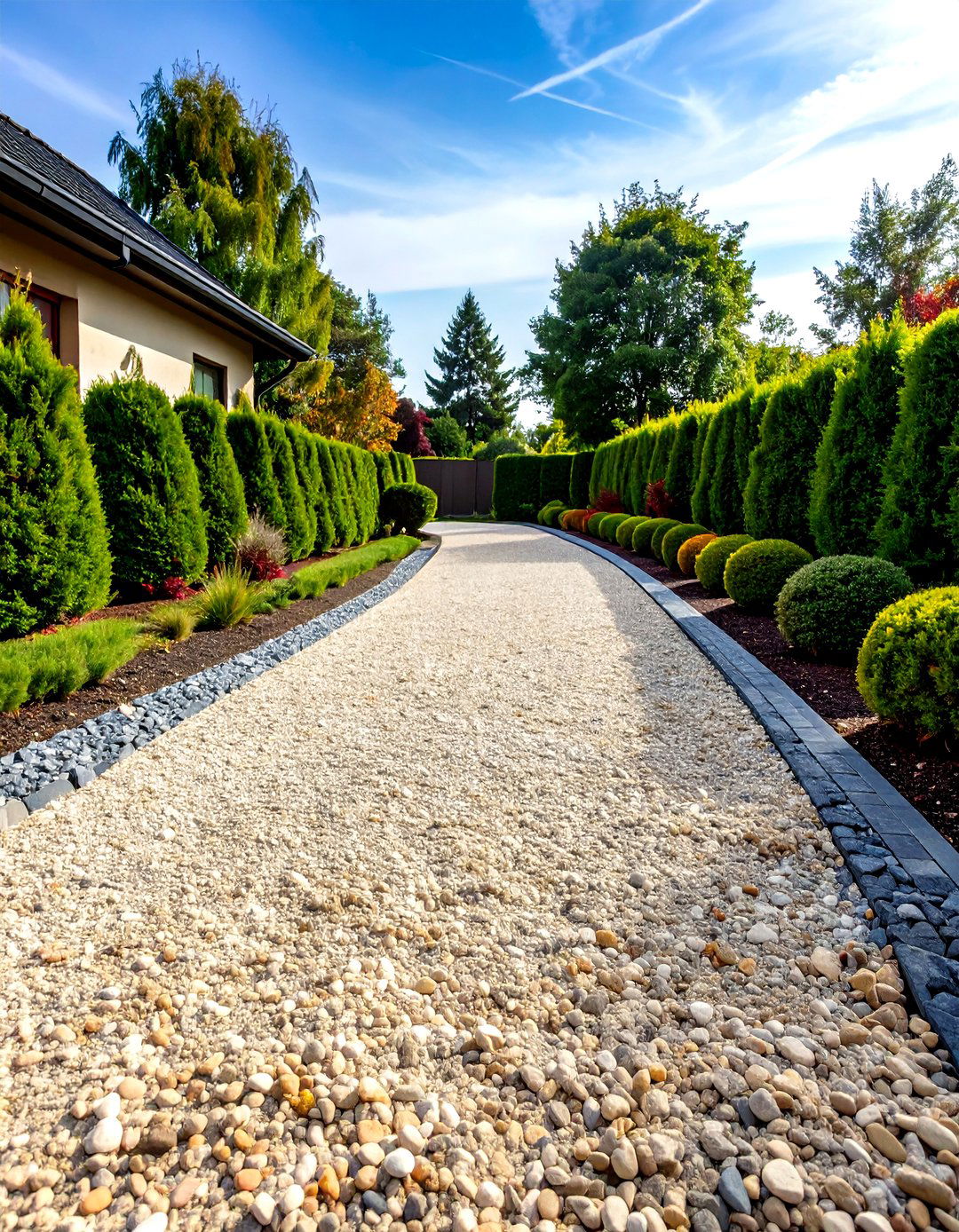
A straight gravel driveway remains a timeless staple because it maximizes usable space and keeps installation costs predictable. Lay out the corridor with stakes, excavate 20 – 25 cm, and compact a coarse stone sub-base that drains quickly and resists frost heave. Roll a 5 cm layer of angular “traffic-bond” gravel, then finish with a 3 cm topping of decorative chips that lock together under vehicular pressure. Specialists recommend pitching the surface 1–2 % so runoff travels toward planted swales rather than pooling on the path. A crisp straight line naturally complements symmetrical facades and pairs well with formal hedging for instant curb authority.
2. Gentle Woodland-Curve Gravel Driveway

Unlike the rigid geometry of many suburban entrances, a softly curved woodland gravel driveway follows the land’s contours, easing grades while showcasing mature trees. Experts note that keeping overall slope below 15 % improves traction and minimizes washout risk in downpours. Excavate in shallow lifts to preserve root zones; then lay geotextile fabric and a crushed-stone base so roots receive oxygen yet remain protected from tire compaction. A final layer of 8 – 10 mm angular slate or granite offers forest-friendly tones that hide leaf litter. Subtle low-voltage uplights angled at trunks add drama and make the winding route safer after dusk.
3. Pea Gravel Driveway for Soft Curb Appeal
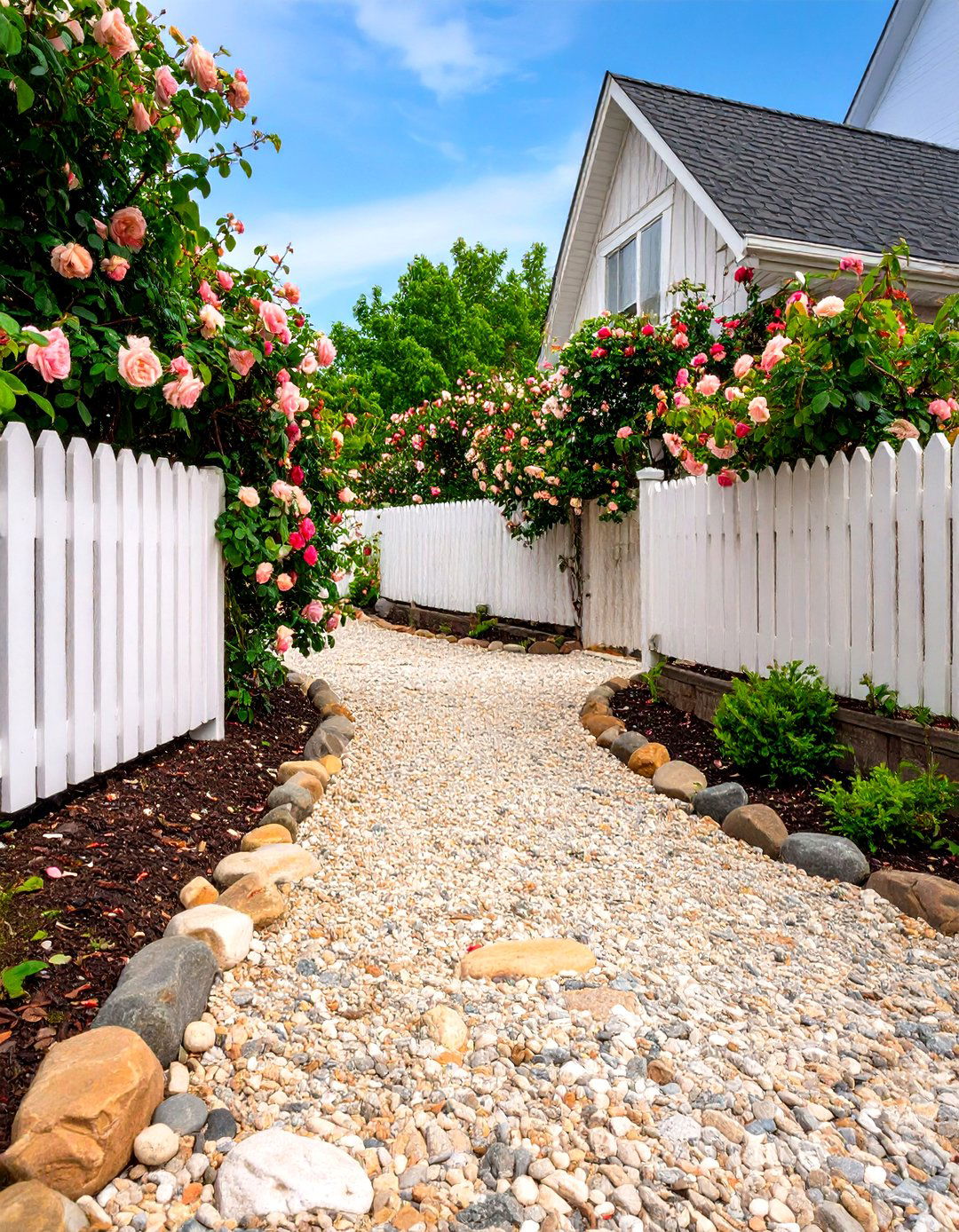
For homeowners craving an inviting crunch underfoot, pea gravel delivers warmth and texture without breaking budgets. Its rounded 10 mm stones feel almost beach-like, but they do migrate if the base isn’t firmed up first. Garden pros suggest raking loose areas quarterly and backfilling low spots with fresh gravel to keep ruts at bay. Installing pressure-treated timber or steel edging 5 cm above grade stops the beads escaping into lawns, while a compacted granular sub-base supplies drainage and rigidity. Pair this look with white picket fencing, climbing roses, and a brick front path to create an instantly charming welcome.
4. Grid-Stabilized Gravel Driveway
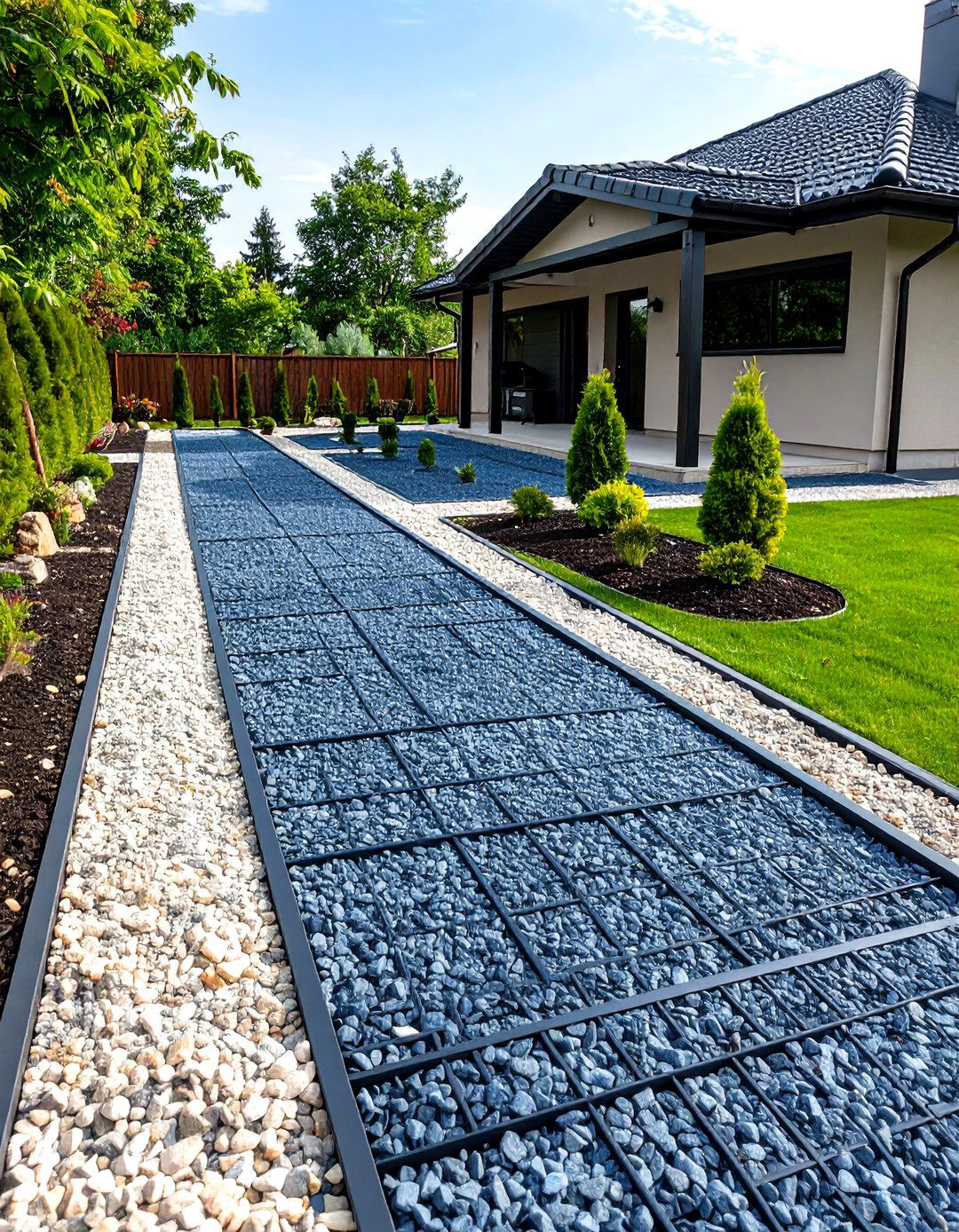
Take gravel’s rustic beauty and give it a hidden backbone by installing HDPE geocell or honeycomb grid panels before spreading stone. The interlocking cells confine aggregate, preventing tire ruts and letting you use smaller gravel that stays perfectly flush with garage floors. Because the grid itself is permeable, rain filters into the subsoil, reducing storm-water runoff and qualifying many builds for modern permeable-paving incentives. Maintenance typically involves a yearly top-up of 1 – 2 cm of gravel—far less than traditional loose surfaces—and snow shovels glide smoothly because stones remain locked in place.
5. Mixed-Size Angular Gravel for All-Season Traction
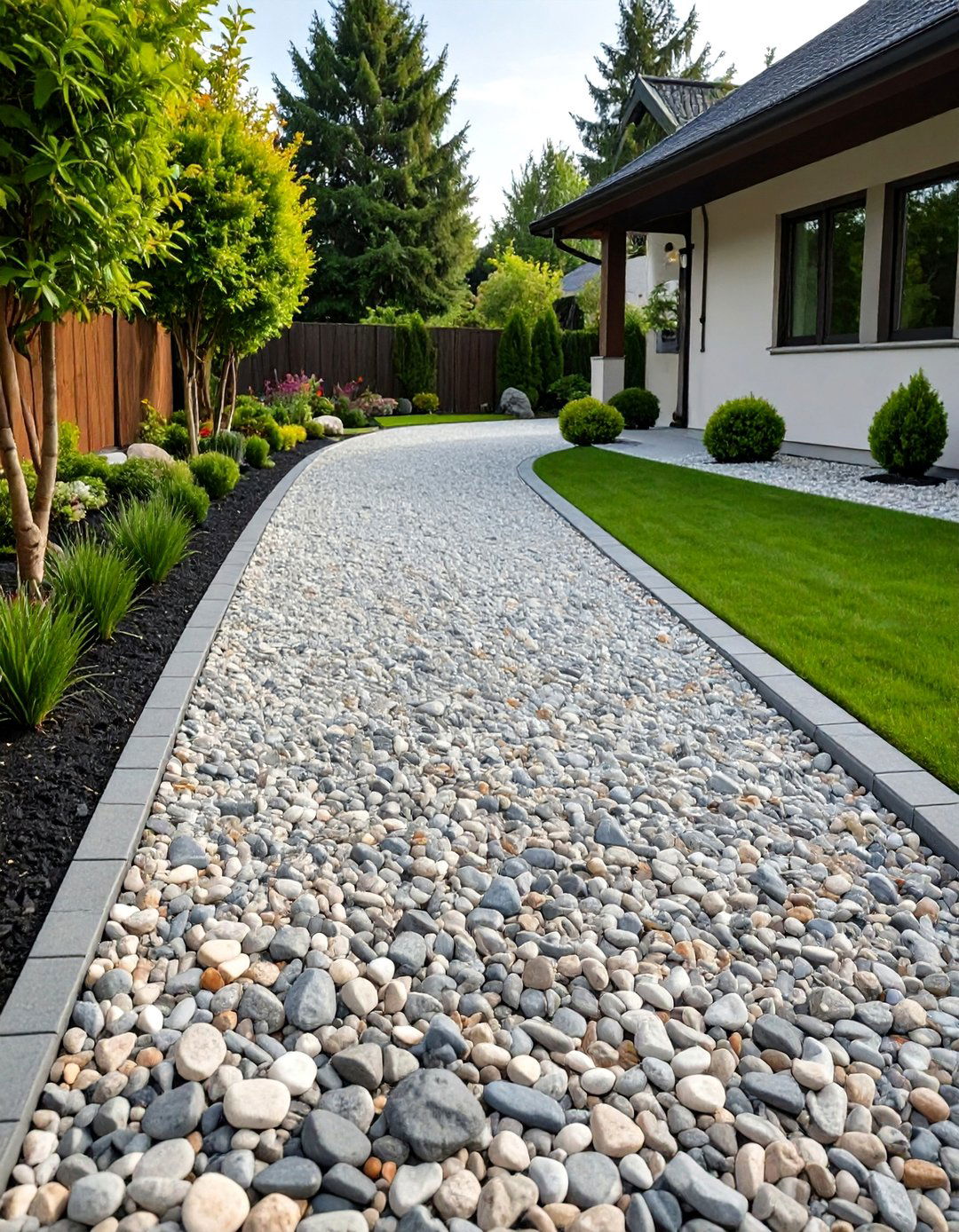
Surprisingly, combining two or three stone gradations—say 20 mm base gravel topped with 10 mm chips—creates a tighter interlock than single-size fills, boosting year-round skid resistance. Drainage specialists highlight that wider gaps between larger base stones form capillary breaks that whisk water downward, protecting driveways from freeze-thaw cycles. Finish with a thin layer of crushed granite screenings that wedge into voids, yielding a firm, broom-textured riding surface. This layered blend stands up to snowplows better than rounded mixes and provides confident footing for pedestrians in wet weather.
6. Recycled Concrete Gravel Driveway
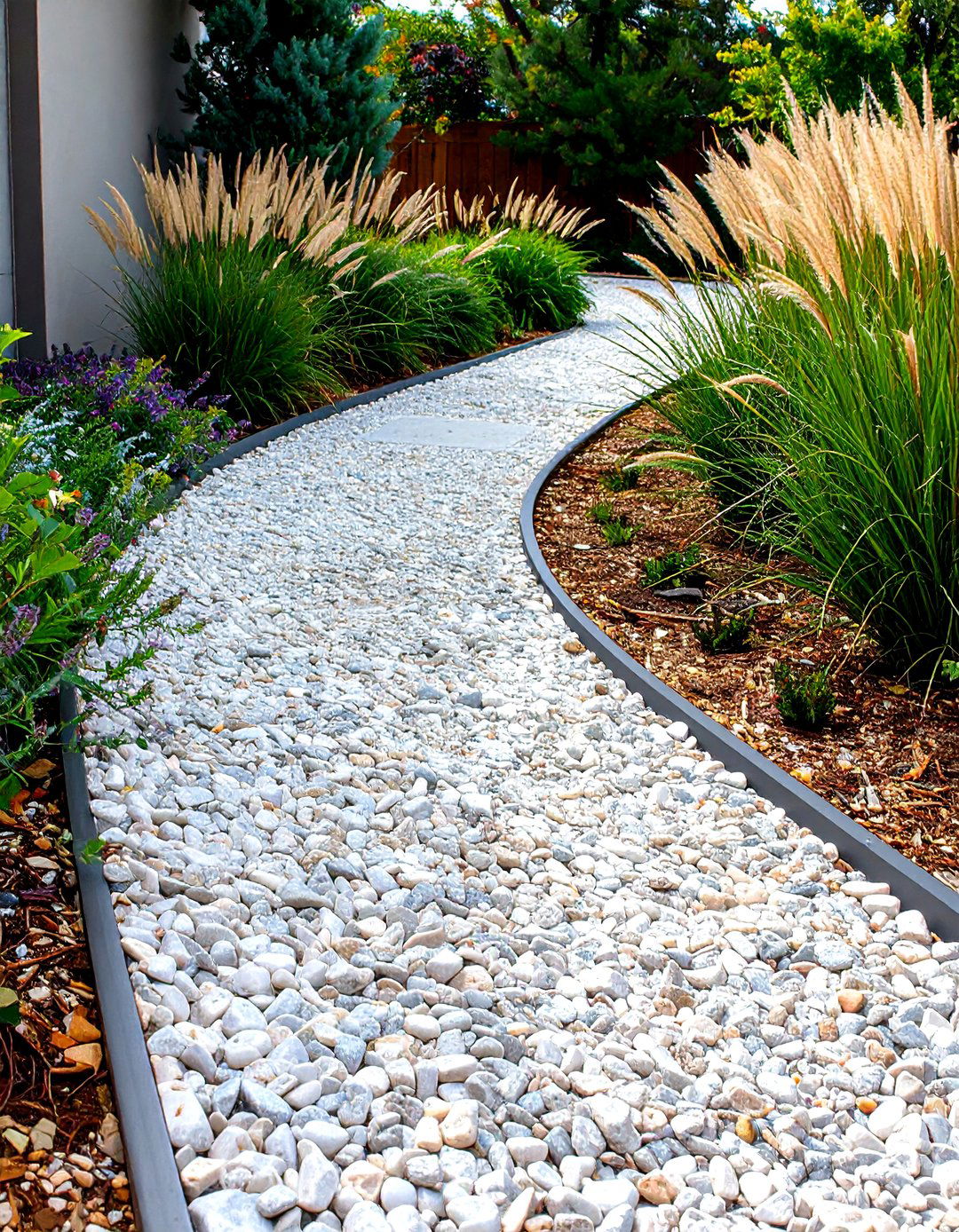
Owing to its eco-friendly credentials, recycled concrete aggregate (RCA) offers an industrial-chic alternative that keeps thousands of kilograms of rubble out of landfills. While RCA compacts as tightly as limestone, planners caution that unstabilized surfaces can spread if edges are left unconstrained, so pair with steel edging or a grid base for best results. The pale gray coloration pairs beautifully with modern façades and contrasts strongly against drought-tolerant ornamental grasses—perfect for sustainable landscapes.
7. Crushed Limestone Chip Driveway

Crushed limestone’s angular edges grip together, forming a naturally permeable yet incredibly durable driveway that self-heals minor indentations under rolling tires. Its neutral cream palette brightens shady lots and coordinates effortlessly with buff stone retaining walls. Because limestone slightly raises surface pH, it discourages moss growth, keeping maintenance light. Rake annually, top-dress every three years, and add crushed limestone fines around mailbox posts or parking bays for a cohesive monochrome look.
8. Two-Tone Gravel Strip Driveway Statement

For a subtle but stylish twist, outline the main wheel path with darker basalt chips while filling the central strip and edges with pale quartzite, producing a two-tone striped effect that guides drivers visually at night. Landscape designers celebrate this approach for making narrow lots appear wider through contrast. Permeable paver blogs point out that using separate aggregates can also help identify parking zones or guest turnarounds. Keep boundaries crisp with recessed aluminum edging so colors never bleed into one another.
9. Grass-Ribbon Gravel Driveway Hybrid
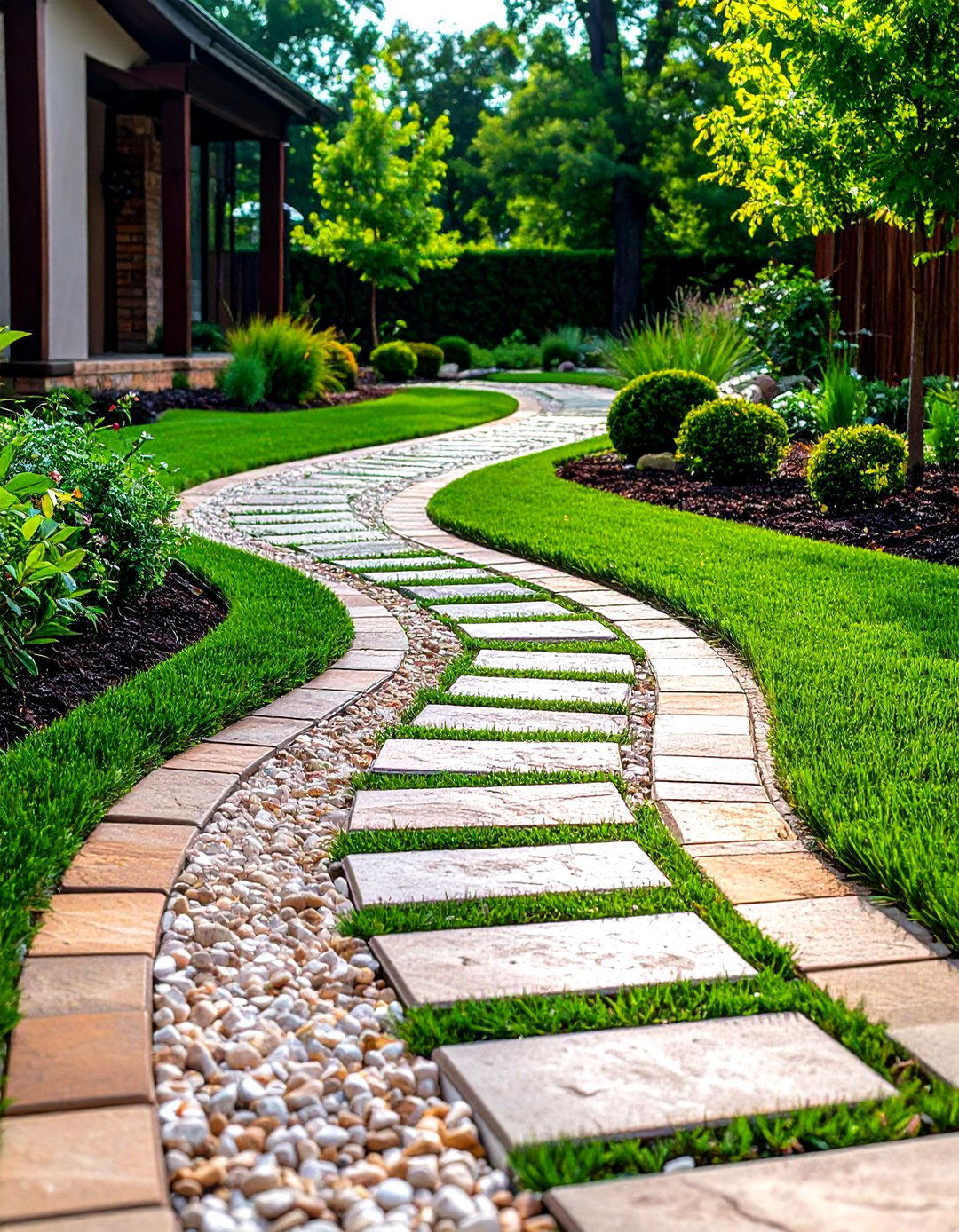
Ribbon driveways, also called Hollywood strips, combine two gravel tracks with a central ribbon of resilient turf or groundcover, reducing impervious surface area by up to one-third while lending vintage charm. Choose low-mow dwarf fescue or thyme in sunny sites; use brick pavers at apron transitions to resist shearing forces during tight turns. This format offers instant drainage because water infiltrates the grass channel, and the green median frames vehicles, making the driveway look like a garden path rather than a utilitarian slab.
10. Cobblestone-Edged Gravel Elegance
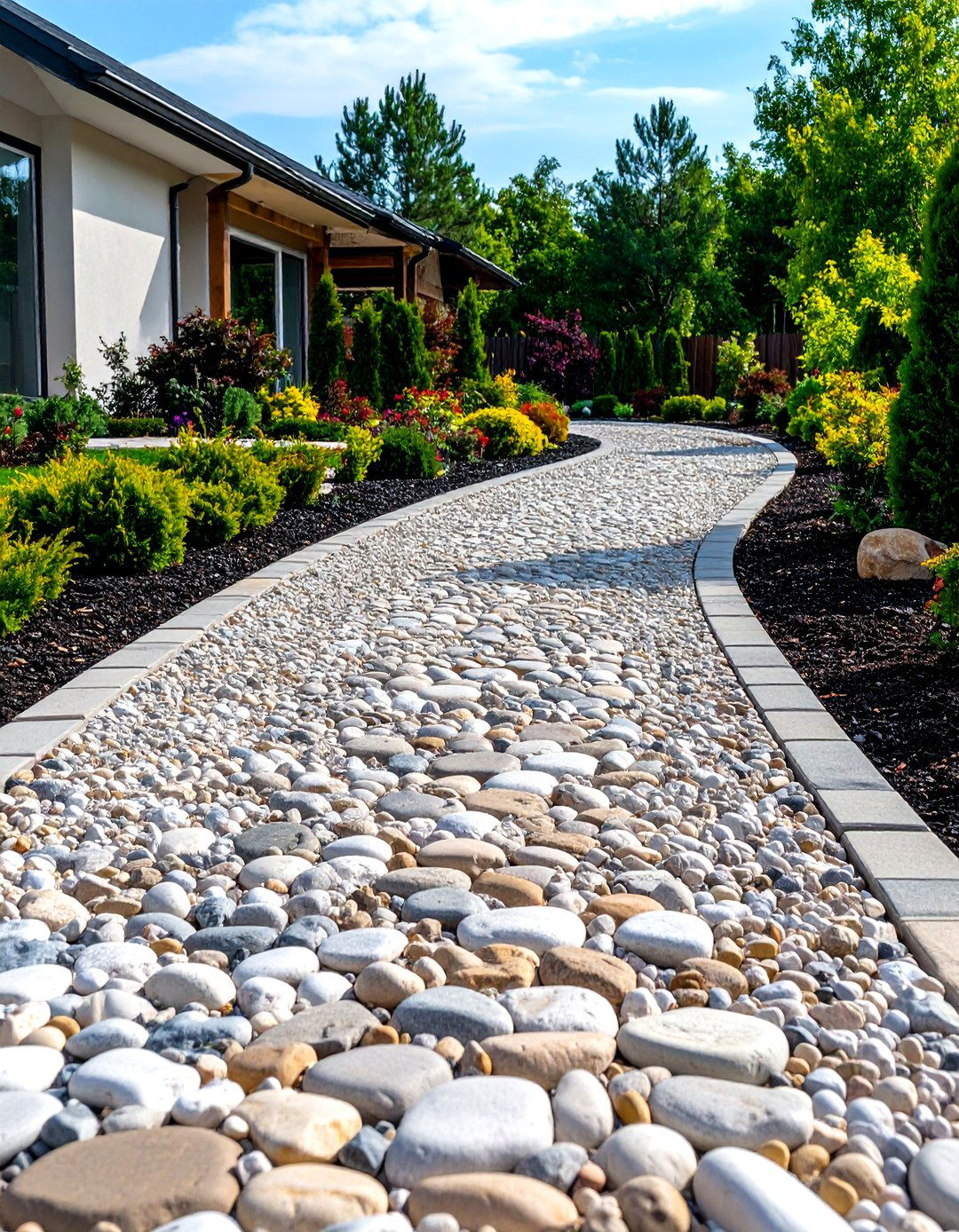
Cobblestone or set-stone borders elevate even the simplest gravel drive, creating a physical barrier that stops stone spillage and visually links the entrance to historic façades. Step-by-step guides emphasize seating each cobble in a concrete haunch, then backfilling gravel flush with the top for a seamless tire transition. The rounded gray-brown cobbles complement mixed pea and granite blends, while the imprint of hand-laid masonry adds artisan depth you can’t get from poured edging.
11. Solar-Lit Gravel Driveway Glow

A gravel surface acts like a natural reflector, amplifying the gentle glow from solar path lights staked along the margins. Recent reviews praise modern stainless-steel stake lights for giving up to eight hours of warm illumination after a single sunny day and lasting over 50,000 burn hours. Space fixtures every 2–3 m for even distribution; nestle them 5 cm inside the edge to avoid accidental tire damage. The result is a welcoming runway effect that boosts nighttime safety without trenching cables or increasing energy bills.
12. Gravel Driveway with Hidden French Drain

If runoff from a hillside or downspouts frequently washes fines away, integrating a French drain beneath the gravel can be game-changing. Install a perforated pipe inside a gravel-filled trench along the uphill edge; cover with landscape fabric and top with matching surface stone so the drain virtually disappears. This subgrade channel intercepts water before it crosses the driveway, keeping the topping layer intact and reducing icy patches in winter.
13. Long Rustic Farmhouse Gravel Approach
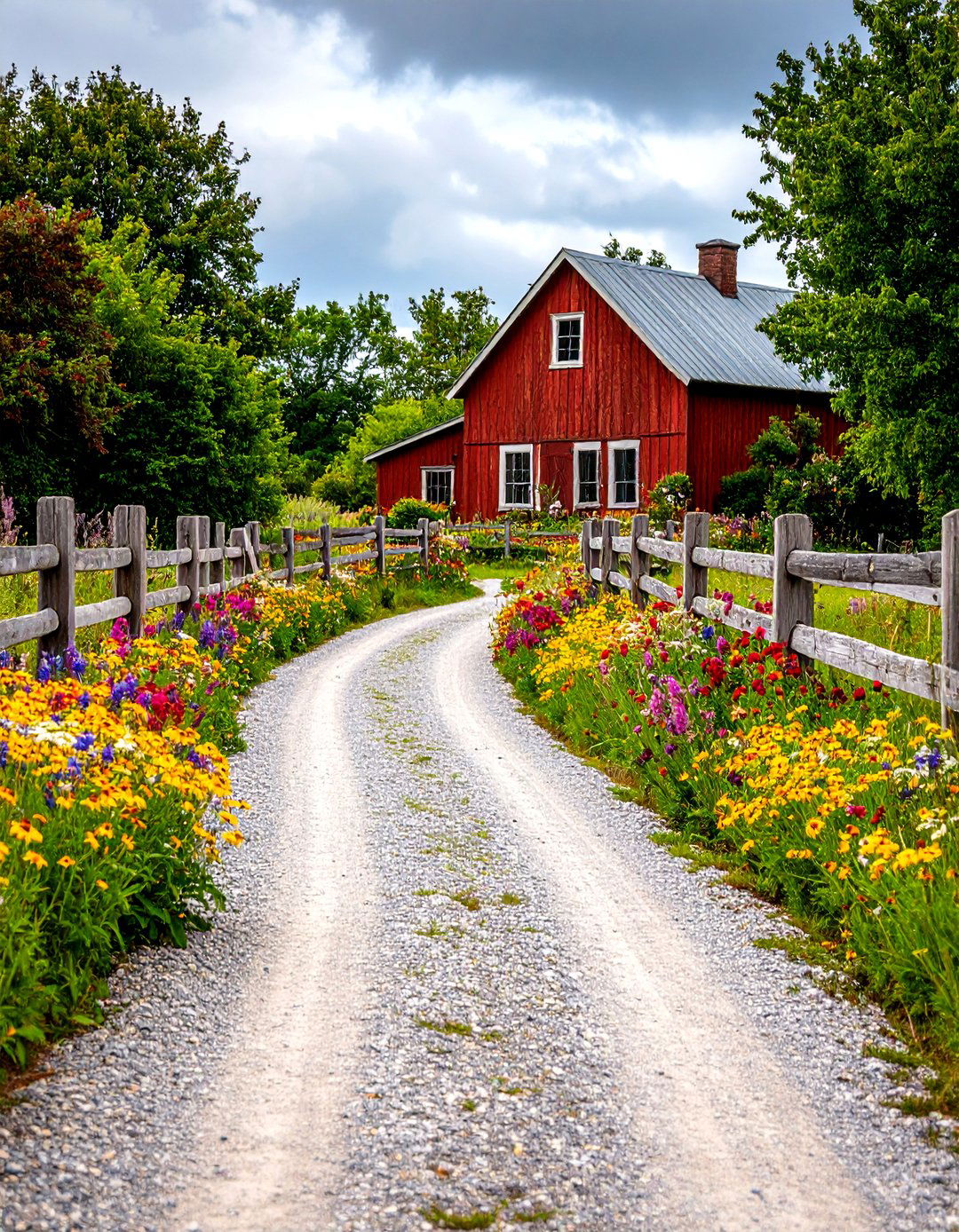
Take inspiration from rural homesteads by running a straight 60–90 m gravel lane flanked by split-rail fencing and native wildflowers. DIY guides advise marking the path, removing organic topsoil, and grading a crown down the center so rain sheds to ditches on both sides. Opt for a coarse-base gravel like “#57 stone” topped with 10 mm chips to handle heavy farm vehicles without bogging. Periodic re-grading using a rear tractor blade keeps the surface even for decades.
14. Coastal Shell Gravel Driveway Ambience

Crushed oyster or clam shells give coastal cottages a sun-bleached, resort-style driveway that compacts firmly yet remains permeable. Shell fragments interlock over time, bleaching to a soft white that brightens gray skies and contrasts beautifully with sea-grass plantings. Because calcium-rich shells can alter soil chemistry, edge the drive with salt-tolerant species like lavender or rosemary. Top up thin areas yearly as shells gradually break down into fine sand.
15. Minimalist Modern Fine-Stone Driveway
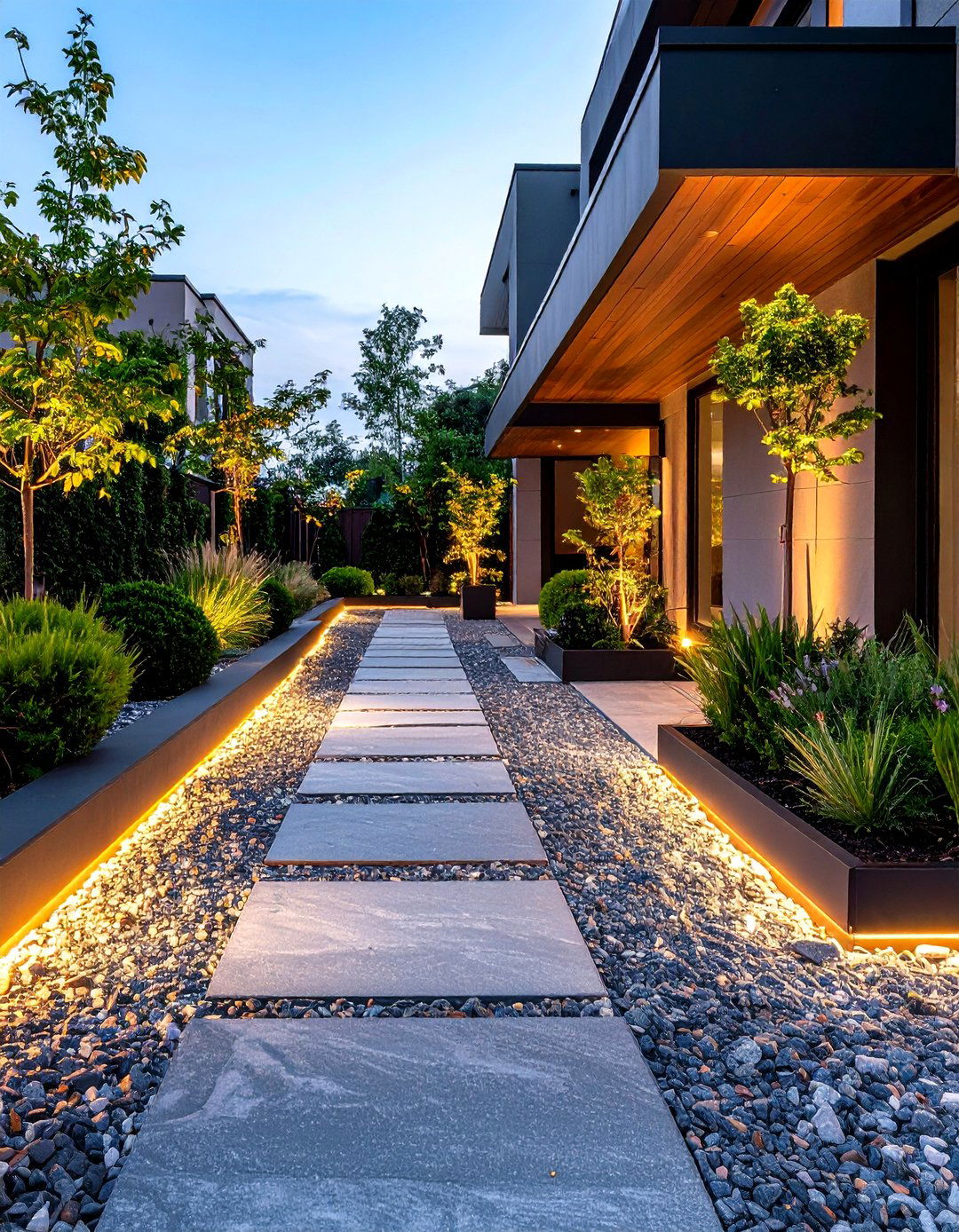
To complement minimalist architecture, select 6 – 8 mm crushed basalt spread over an invisible grid base, then frame the drive with powder-coated steel edging only 3 mm thick for razor-clean lines. Low-maintenance driveway tutorials highlight chip-seal variants that lock fines into place, eliminating annual raking. Pair the monochrome gravel with corten planters and concealed strip lighting in retaining steps for an understated yet luxurious entrance.
16. Permeable Paver-and-Gravel Fusion Driveway
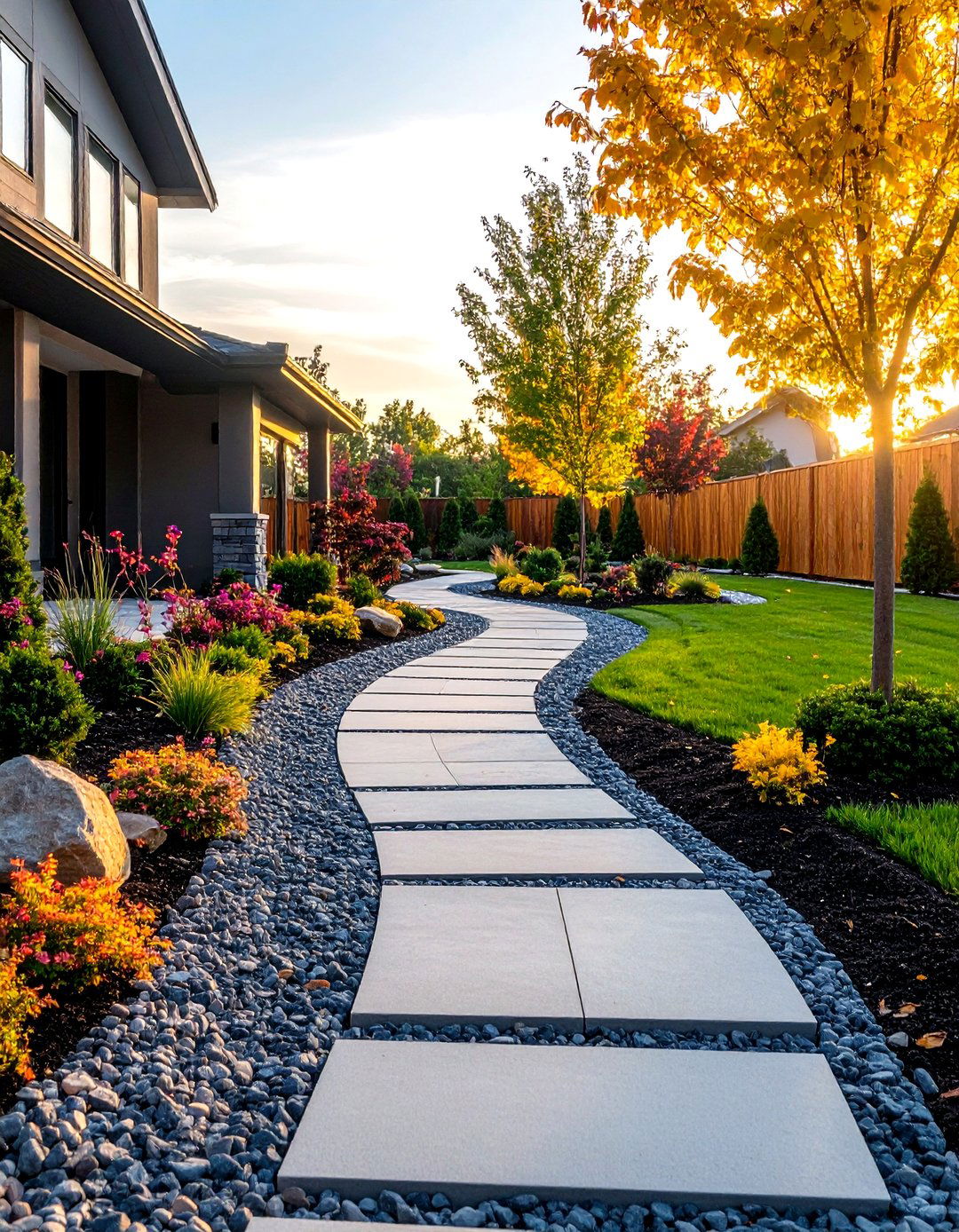
Permeable paver panels filled with decorative gravel combine the load-bearing power of concrete blocks with the storm-water performance of loose stone. Design blogs note these systems can infiltrate up to 90 % of rainfall, helping projects meet tough runoff codes without sacrificing style. Choose contrasting gravel colors in alternating paver rows to create subtle geometric patterns, then sweep fresh fines into joints twice annually to maintain interlock.
17. Gravel Driveway with Flower Borders
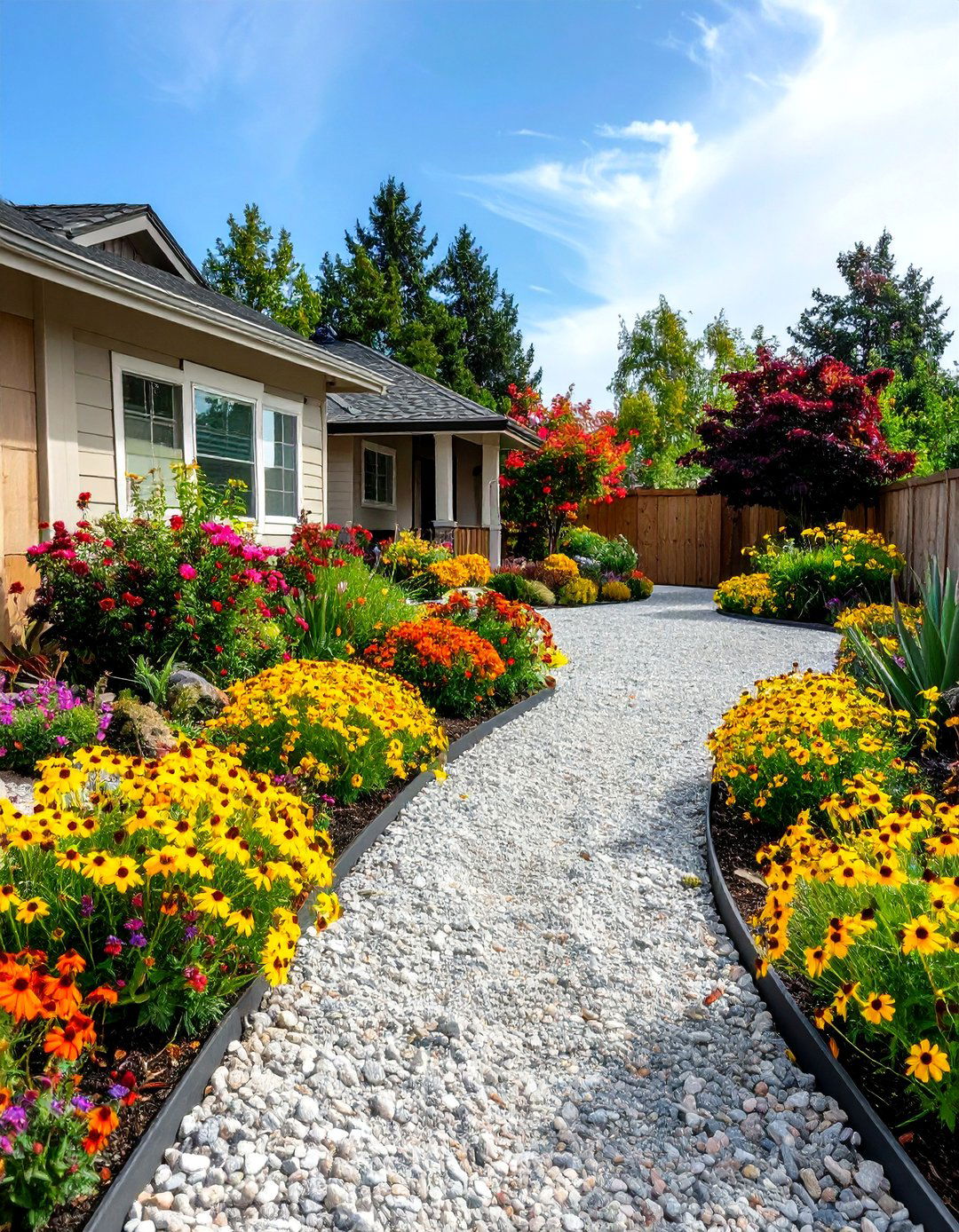
Framing gravel with a 60 cm ribbon of pollinator-friendly perennials transforms a plain motor court into a vibrant, shifting tapestry. Edging guides recommend steel or composite border strips that hold gravel back while creating a neat planting pocket. Select drought-resistant blooms like coreopsis, Russian sage, and yarrow—plants that thrive in reflective heat and recycle gravel’s stored warmth to extend bloom season. Mulch beds heavily to keep errant stones from jumping into soil.
18. Water-Feature Entry Gravel Driveway
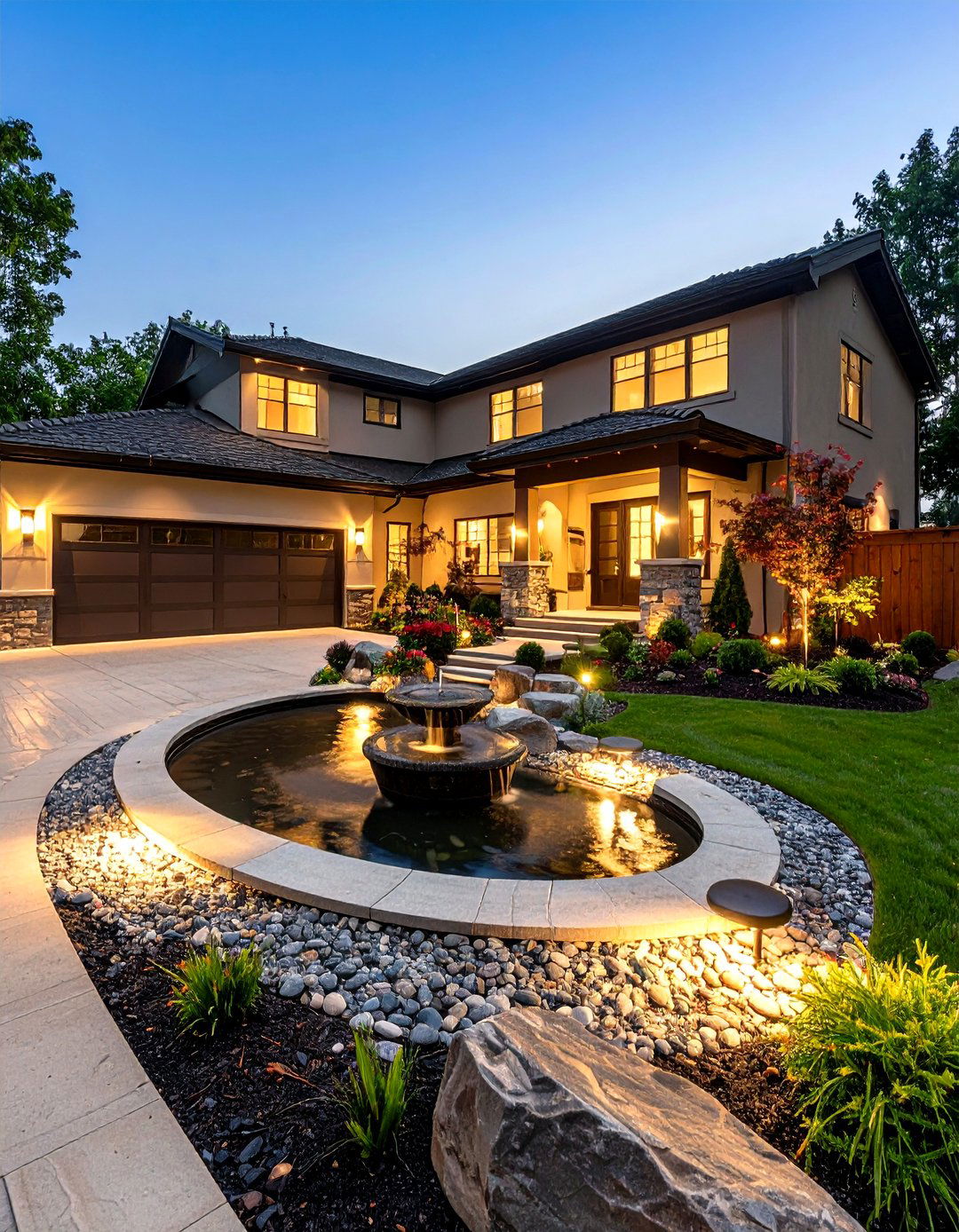
Bringing a modest pond or recirculating fountain to the driveway’s midpoint offers auditory calm and disguises road noise. Drainage articles emphasize setting the water feature at a slightly lower elevation so overflow has a place to collect during storms, protecting the gravel from erosion. Add a stone apron around the basin to catch splashes, and illuminate the feature with warm LED uplights for an enchanting nighttime arrival sequence.
19. Gravel Driveway with Retaining Walls on a Slope
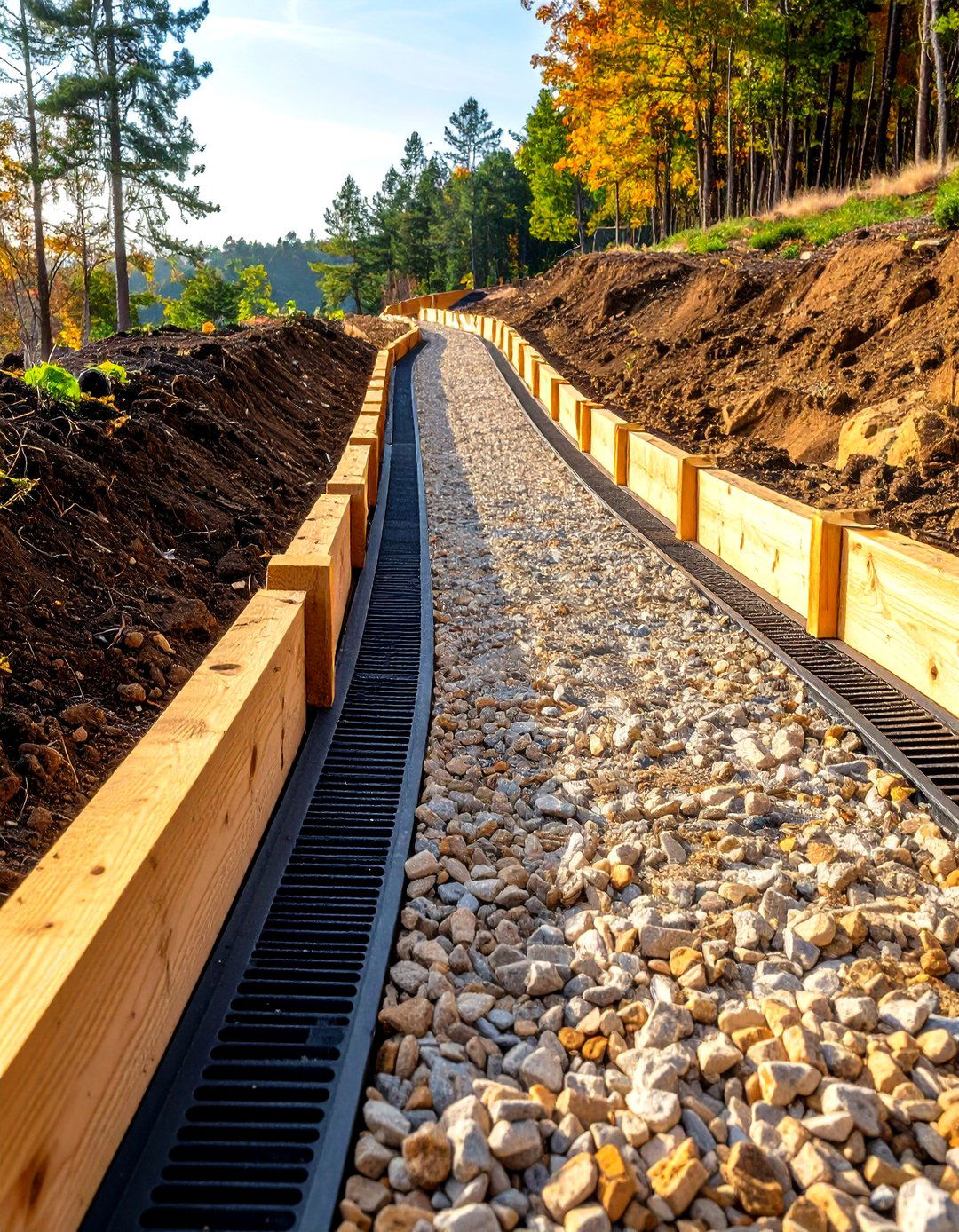
Where driveways carve across steep banks, timber or modular-block retaining walls support the uphill side, preventing washout and widening usable width. Ground-grid systems filled with gravel provide extra stabilization where soil is loose or sandy. Install a crushed-stone backfill behind walls plus perforated drainpipe to relieve hydrostatic pressure. Cap the wall with flat limestone or concrete toppers that double as casual seating for garden gatherings.
20. Heated Snow-Melt Gravel Driveway

Finally, cold-climate owners can merge gravel’s charm with modern convenience by embedding low-voltage heating cables or hydronic tubing beneath a permeable paver-and-gravel surface. Case studies show systems activate automatically when sensors detect moisture below 3 °C, melting snow before it bonds. Insulation boards under the heating layer cut energy consumption, and grid-confined gravel protects cables from shifting under tire load. No more winter shoveling—just a clear, safe path that still looks like natural stone.
Conclusion:
Collectively, these twenty gravel driveway ideas demonstrate how a simple stone surface can be tailored to any climate, aesthetic, or budget—whether you crave coastal nostalgia, woodland curves, or high-tech snow melting. By pairing the right aggregate with smart edging, drainage, lighting, and support systems, you gain a driveway that handles weather gracefully, respects the environment, and elevates curb appeal every single day.



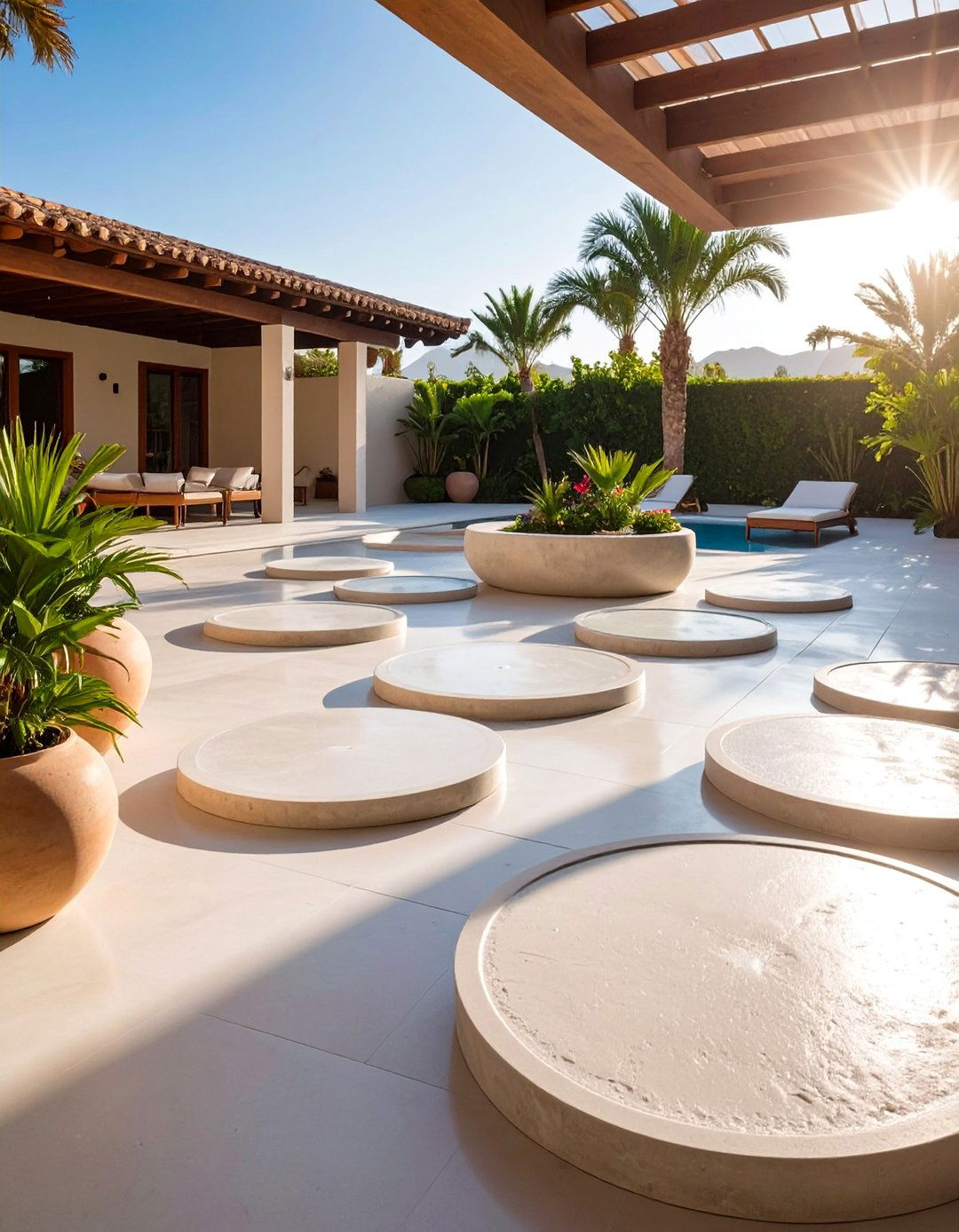

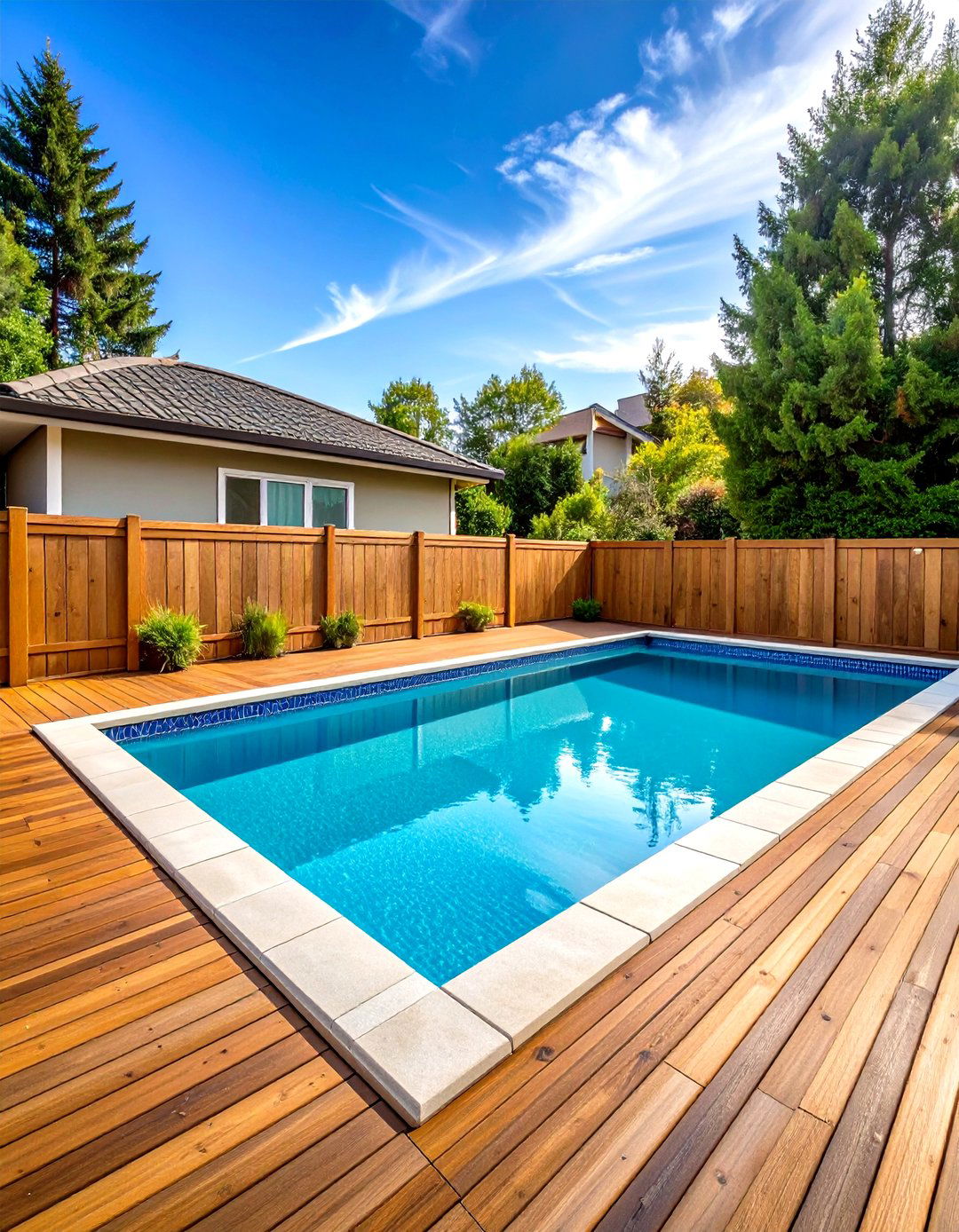

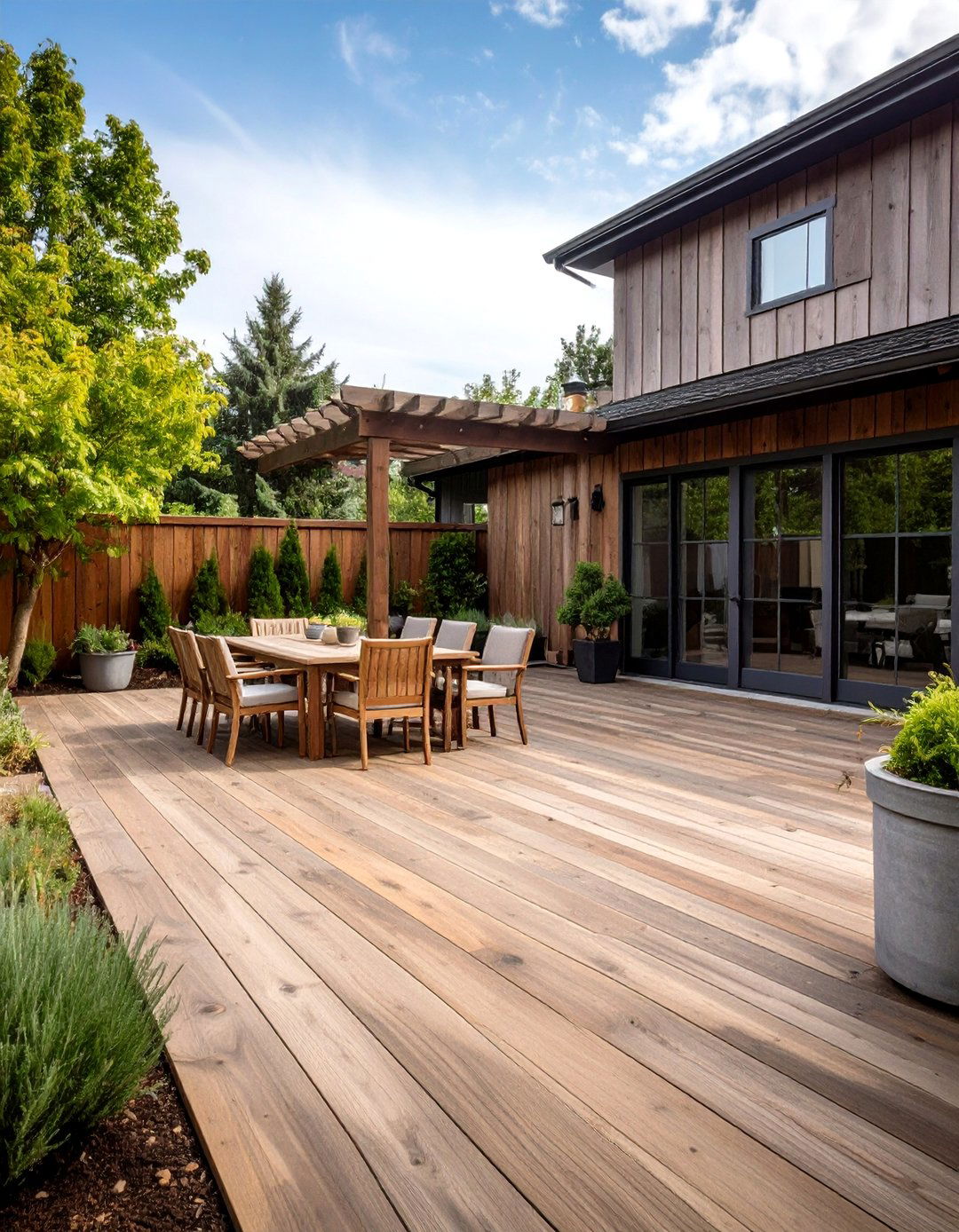
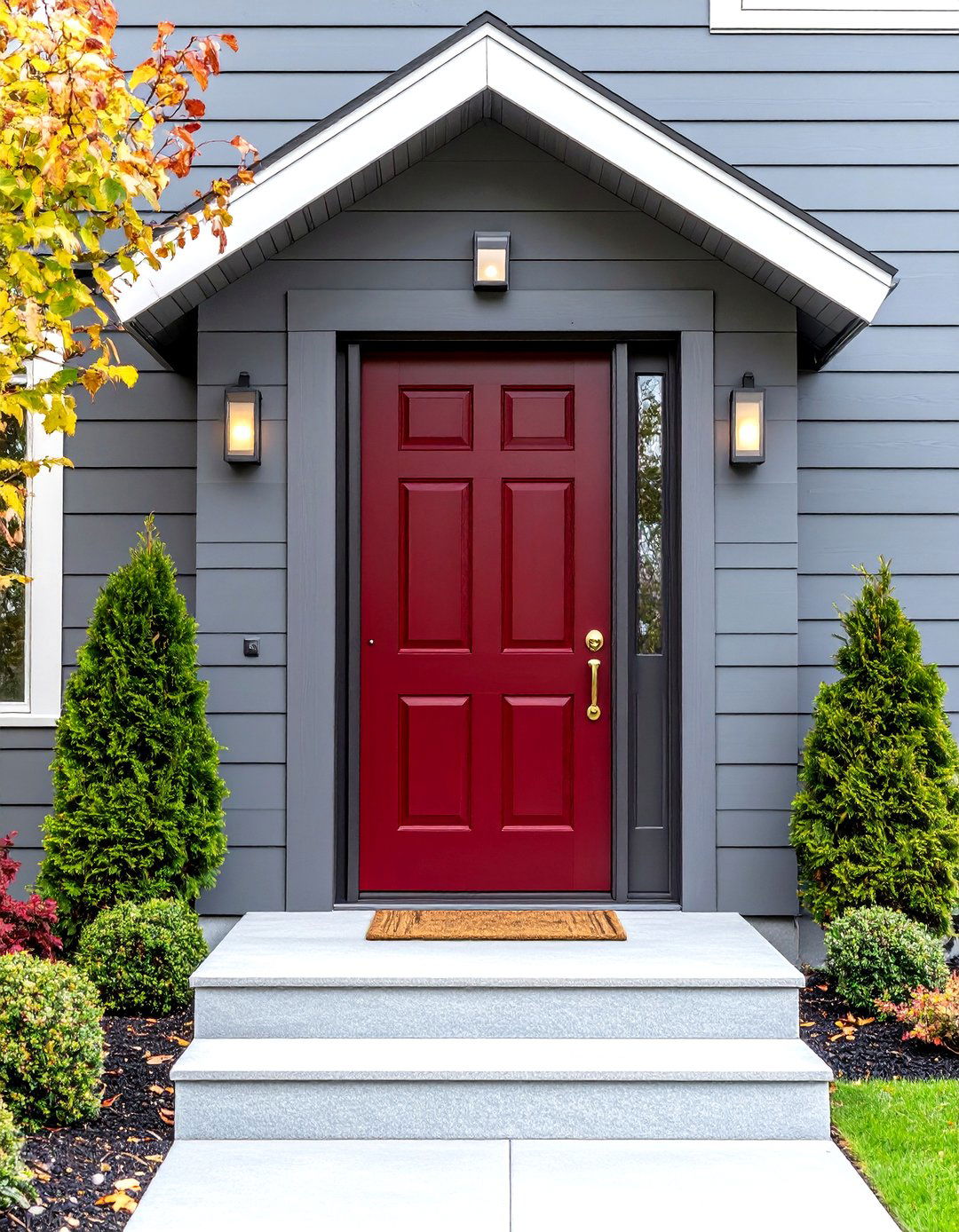
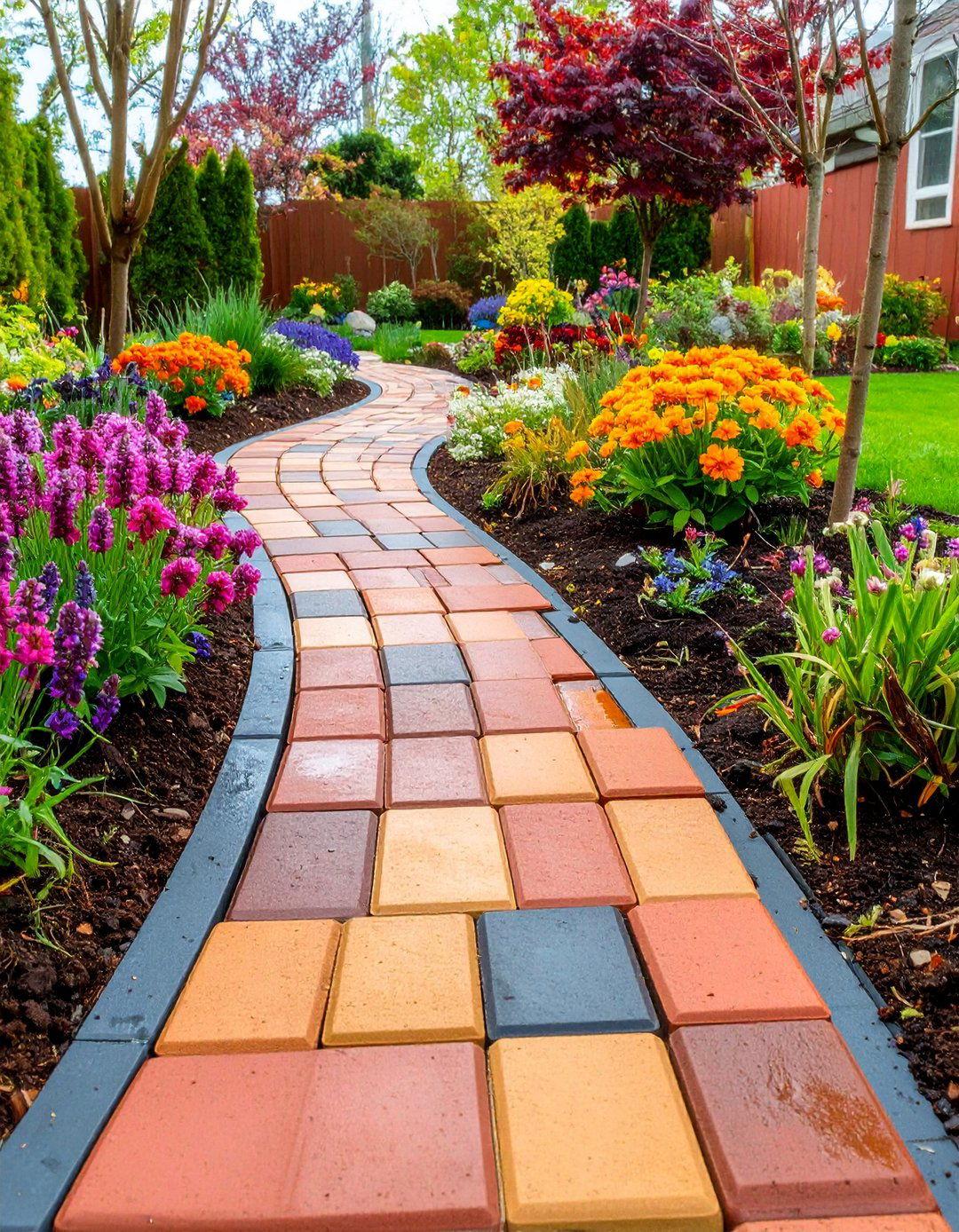



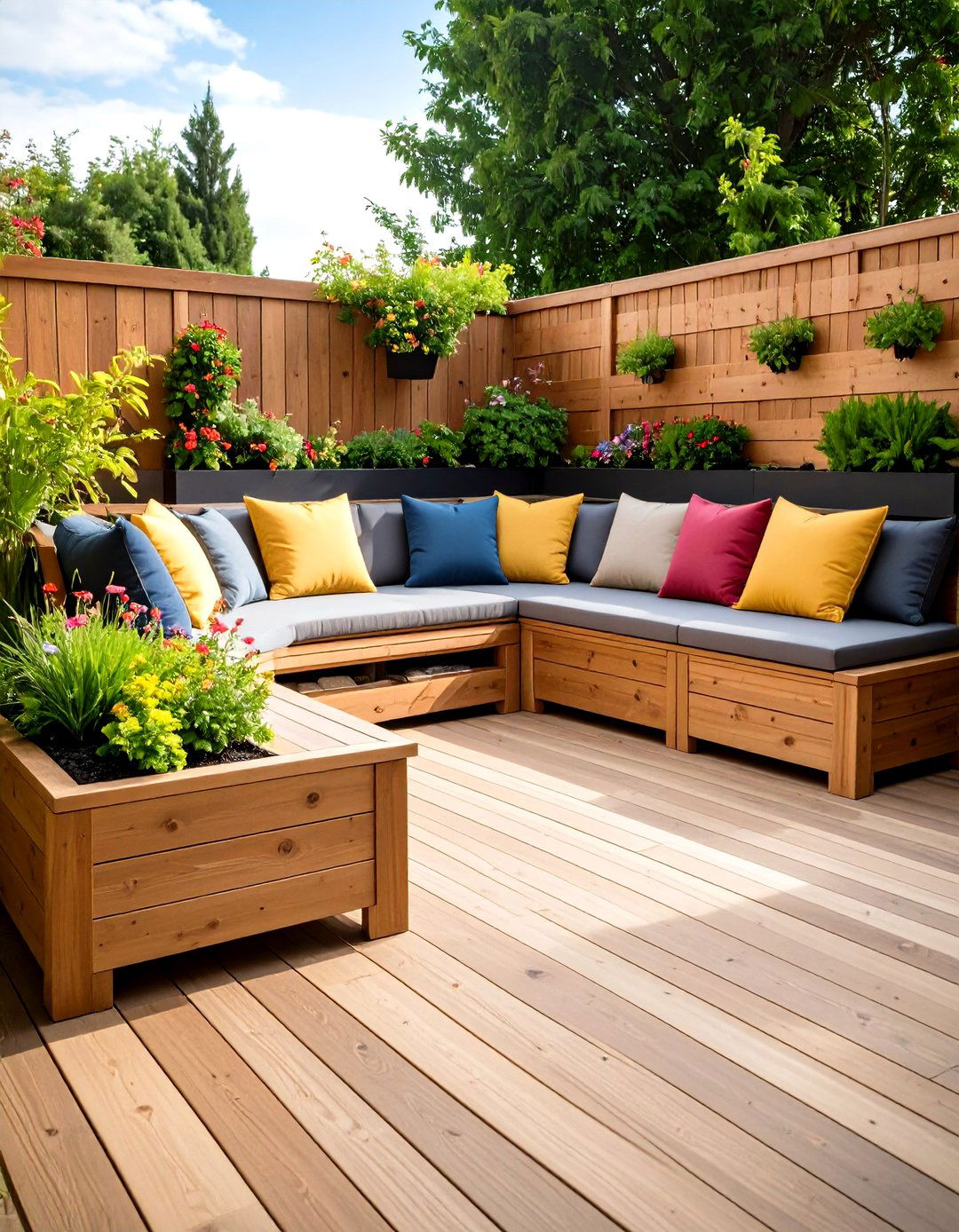

Leave a Reply